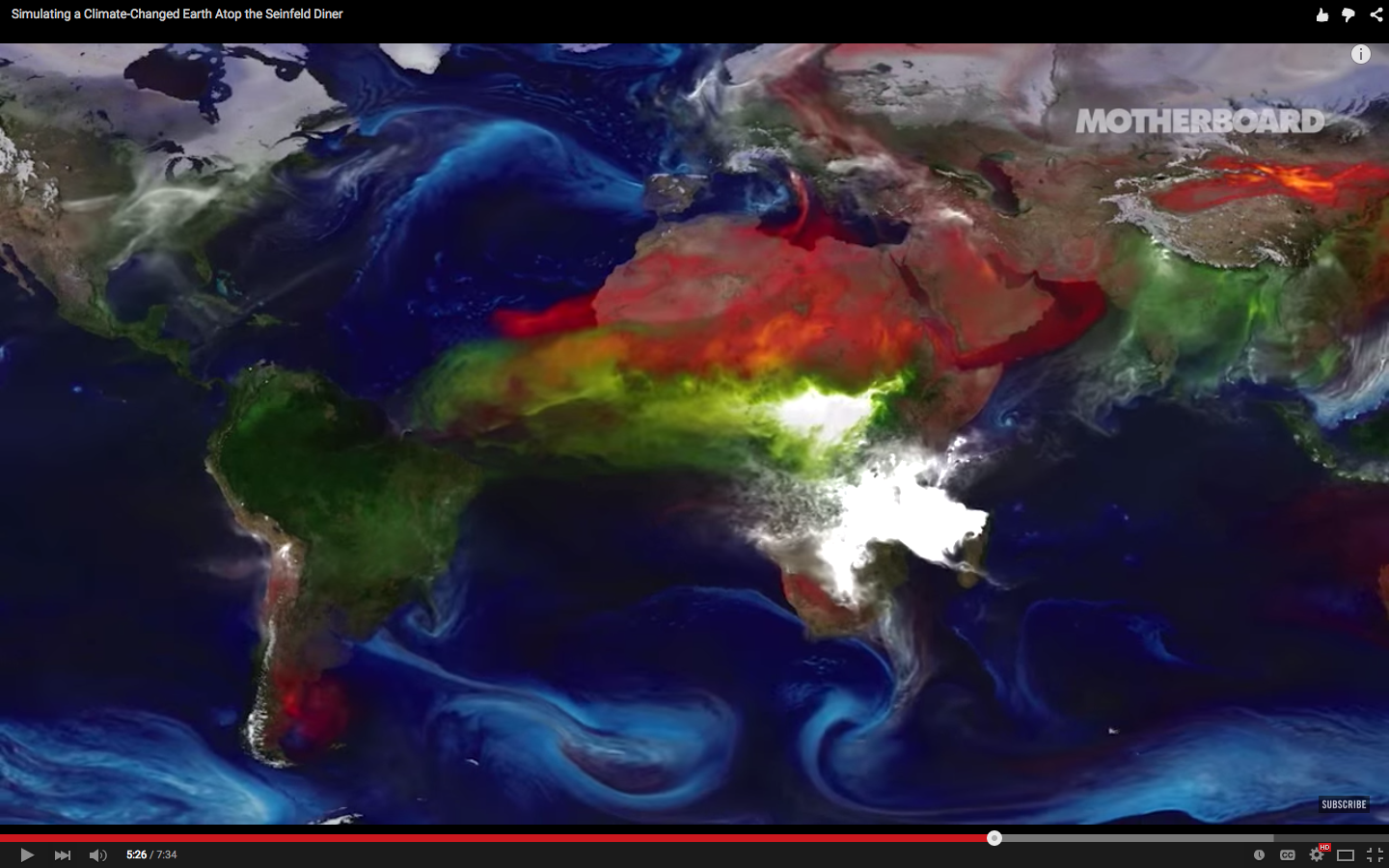When we talk about climate models, it’s all all “uncertainty” this and “insufficiency” that — as though there’s some perfect, comprehenisve model of planet earth to compare them to. But no one criticizes NASA for building spacecrafts that aren’t the Starship Enterprise, because they know that the Starship Enterprise is fictional. The same is true for climate models — that perfect simulation doesn’t exist.
This video from Motherboard helps explain why that is (while also informing us that NASA’s Goddard Institute for Space Studies happens to be right behind the Seinfeld diner — a great factoid to tuck away for later!).
Here’s the bottom line: Climate models translate the natural world into math. As anyone who’s ever taken a physics class can tell you, translating even the simplest things into math is hard. I mean, do you guys remember having to calculate how fast that bowling ball was going when it reached the bottom of that hill? Or how high that baseball went when Bob threw it up in the air? Or what happened when those two blocks crashed into each other?
Well, climate models have to do that kind of thing but for pretty much all water and air, everywhere around the globe, all at once. Not only is that hard, it’s literally impossible to do with perfect accuracy. Uncertainties are — and always will be — part of the deal.
We applaud NASA just for building spacecrafts in the first place, because holy shit, space flight is real! The same should be true for climate models. That perfect simulation is a fantasy, so let’s be realistic and appreciate what we have, because holy shit, we can simulate the world!
Oh, and for the record: Climate models are not responsible for forecasting local weather, so give it a rest, Glenn Beck:



